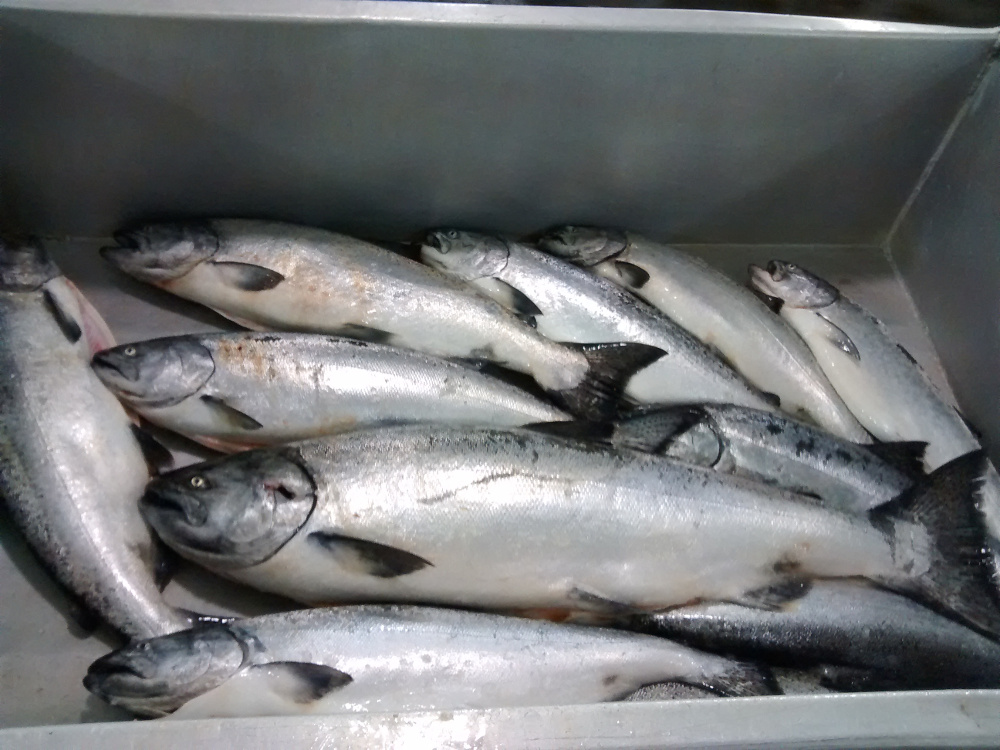
The commercial troll season for king salmon in Southeast Alaska opens Wednesday, July 1. The first summer opening might be a little longer this year with a boost in the catch allowed under the Pacific Salmon Treaty with Canada. The new month also signals the end of spring trolling that targets hatchery kings.
Spring trolling was open in May and June, meant to offer fishing time for chinook produced by Alaska hatchery programs. The Alaska Department of Fish and Game expects the spring catch will wind up around 13-thousand kings. That’s an improvement over last year’s total but still well below recent averages.
With still concerns for wild Southeast chinook that we’ve had a huge reduction in the number of areas that are open in spring,” said Grant Hagerman, the department’s regional troll management biologist. “About a third of what we’ve historically had open has been open so obviously reduces the number of fish harvested and the effort so that’s kind of what we’re still seeing this year.”
Both the winter and spring saw improved catch totals over last year despite continuing restrictions on fishing time and area. But this spring’s catch saw a drop in the Alaska hatchery fish component. Catches were bolstered by king salmon destined for rivers in Canada and the west coast of the U.S.
As for effort, this spring around 250 permit holders have made landings, well below the recent average of around 415 trollers. Also down this year, the average size of spring kings. And the spring price started very low, just over four dollars a pound. Hagerman said that has rebounded to around seven dollars a pound.
“That’s something that we have not really seen before in the past but given how the markets were, you know with everything shutting down, obviously restaurants closing, a lot of the spring fish are fresh fish going to that kind of market,” Hagerman said. “So not surprising that price started out low where they were having to probably freeze that product I would assume but as things started to open that price has come up.”
Typically the price drops going into the summer season.
The big question mark hanging over the summer season was a lawsuit seeking an injunction on king salmon trolling in federal waters three miles off shore. Those waters produce a big part of the summer season catch. A judge recommended against an injunction in June. That’s one piece of good new for trollers.
Another is this year’s allocation for the fleet is up from last year. That’s based on indicators of salmon abundance agreed upon under the treaty. Fish and Game expects the first opening will last around seven or eight days for the fleet to catch a target harvest of over 85-thousand kings, or 70 percent of the allocation. But Hagerman said effort and other factors will play into how quickly the fleet reaches that mark.
“It’s hard to know how this pandemic is going to affect effort, if guys are really itching to get out and there’s going to be a lot more boats out just to get out, or if it’s going to be fewer or kind of how that’s going to impact that,” he said. “Weather is another one too. We’ll really have to get a handle on how that effort has changed because that could swing a day here or there if there’s more boats or fewer boats than what’s anticipated.”
Summer effort has seen a big decrease in the last few years, close to 600 permits in the summer season, instead of the 750-800 that was the norm. A second opening to target the remaining kings will follow later in the summer.











